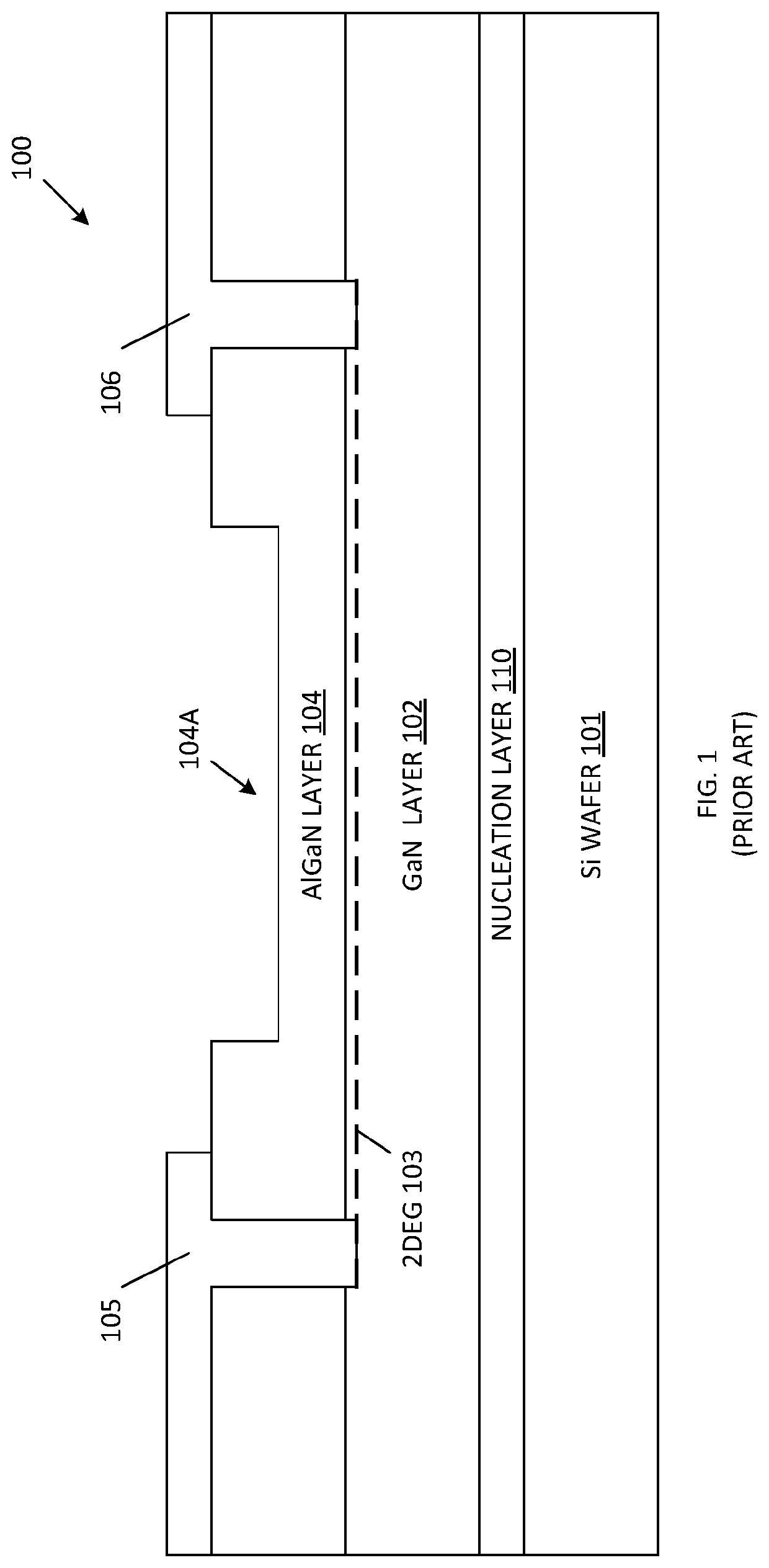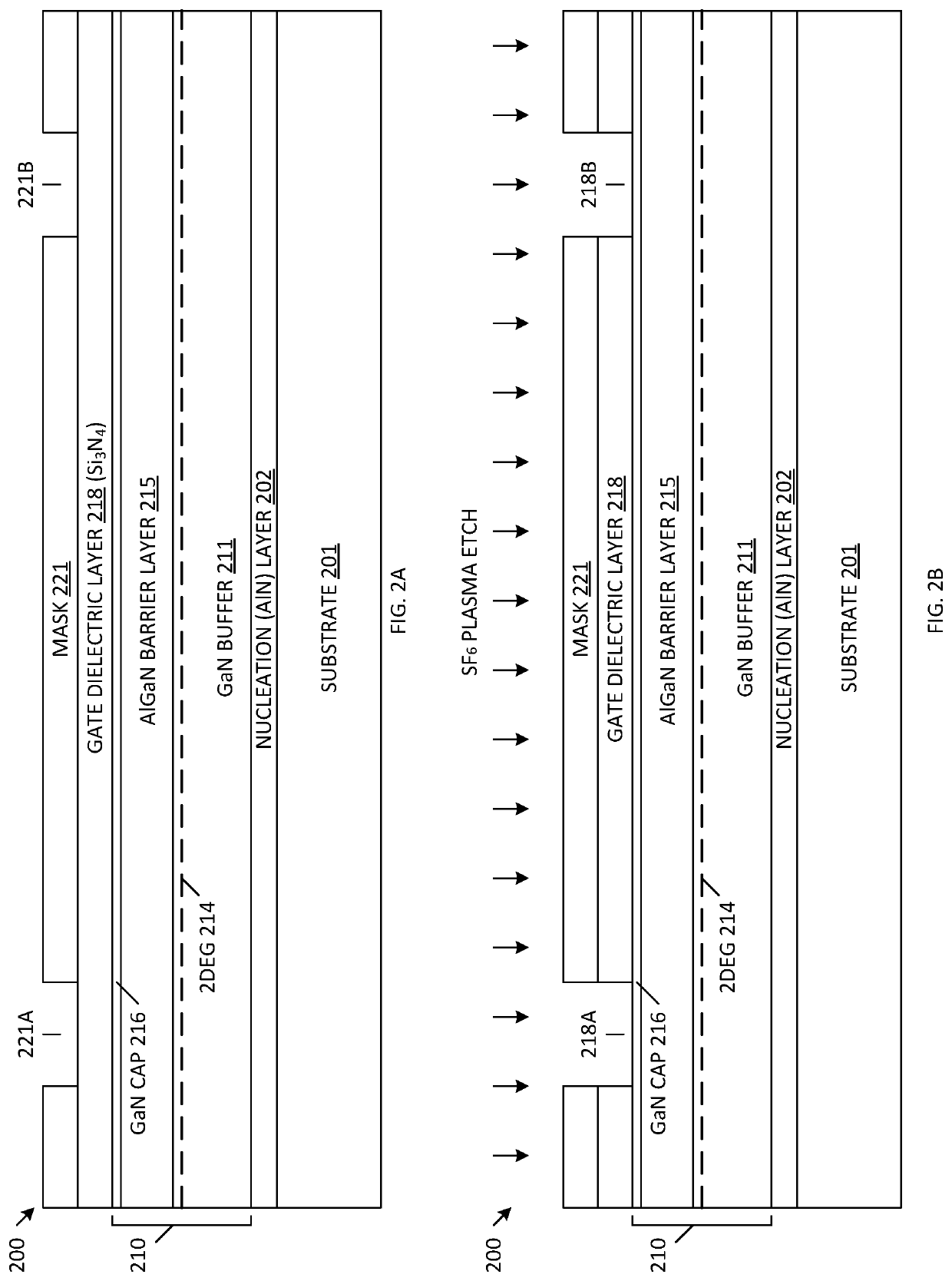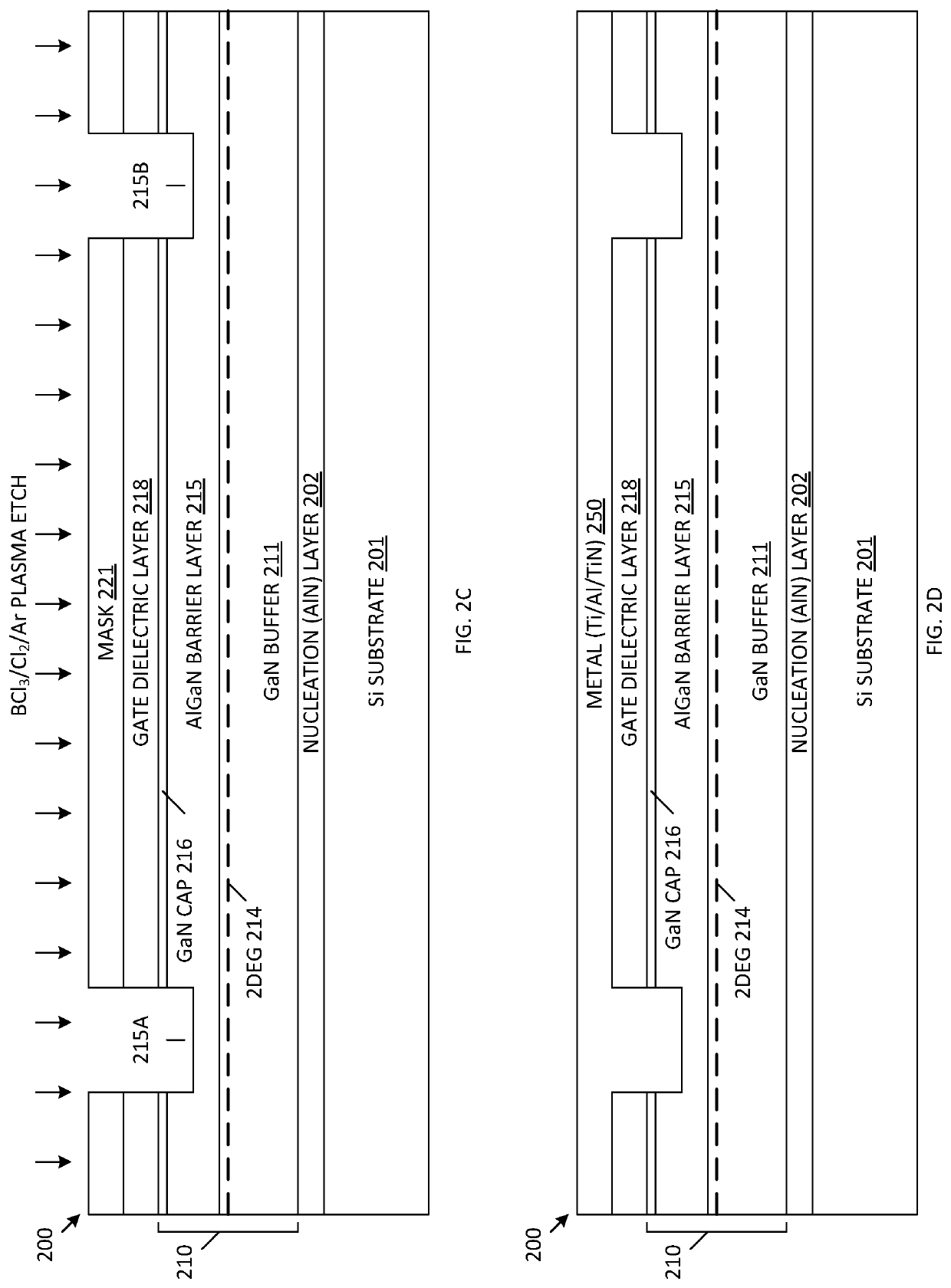Method of forming a GaN sensor having a controlled and stable threshold voltage
a threshold voltage and sensor technology, applied in the field of algan/gan sensors, can solve the problems of complex sensor manufacturing, difficult control of the recess process uniformity, and increased device threshold voltage, so as to reduce current leakage, reduce the amount of dielectric material, and improve the thickness of the algan sensing region.
- Summary
- Abstract
- Description
- Claims
- Application Information
AI Technical Summary
Benefits of technology
Problems solved by technology
Method used
Image
Examples
Embodiment Construction
6]FIGS. 2A-2K are cross sectional views of a GaN sensor 200 that includes a gate dielectric having a sloped profile during various processing steps in accordance with an one embodiment of the present invention. As illustrated by FIG. 2A, sensor 200 is fabricated on a substrate 201. In the described embodiments, substrate 201 is high resistance monocrystalline silicon (having a crystal orientation), advantageously reducing the costs associated with fabricating sensor 200. However, in other embodiments, substrate 201 can be sapphire, silicon carbide (SiC), or a flexible material. Nucleation layer 202 is formed on the upper surface of substrate 201. In the described embodiments, nucleation layer 202 is aluminum nitride (AlN). The nucleation layer 202 is selected to compensate for the mismatch of lattice constants between the substrate 201 and the subsequently formed gallium nitride (GaN) buffer 211. GaN buffer 211 includes one or more GaN layers, which may be interleaved with one or m...
PUM
| Property | Measurement | Unit |
|---|---|---|
| thickness | aaaaa | aaaaa |
| thickness | aaaaa | aaaaa |
| acute angle | aaaaa | aaaaa |
Abstract
Description
Claims
Application Information
 Login to View More
Login to View More - R&D
- Intellectual Property
- Life Sciences
- Materials
- Tech Scout
- Unparalleled Data Quality
- Higher Quality Content
- 60% Fewer Hallucinations
Browse by: Latest US Patents, China's latest patents, Technical Efficacy Thesaurus, Application Domain, Technology Topic, Popular Technical Reports.
© 2025 PatSnap. All rights reserved.Legal|Privacy policy|Modern Slavery Act Transparency Statement|Sitemap|About US| Contact US: help@patsnap.com



